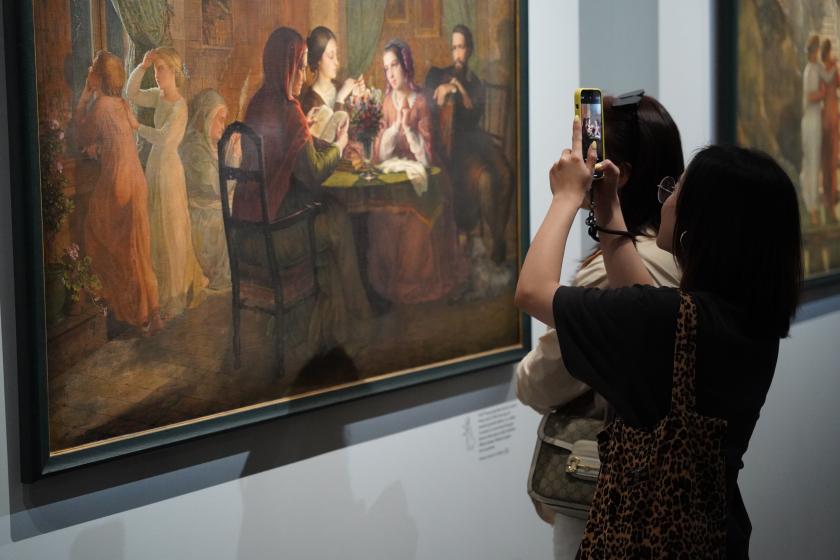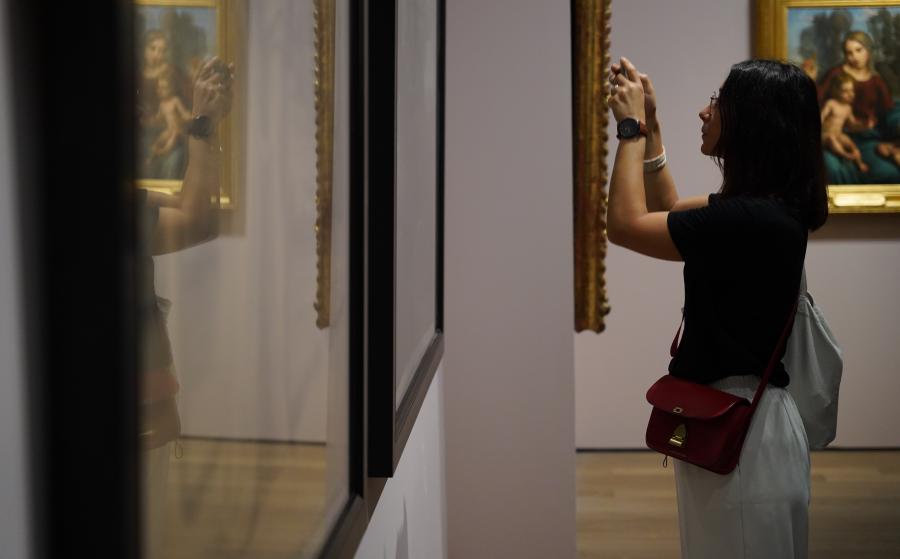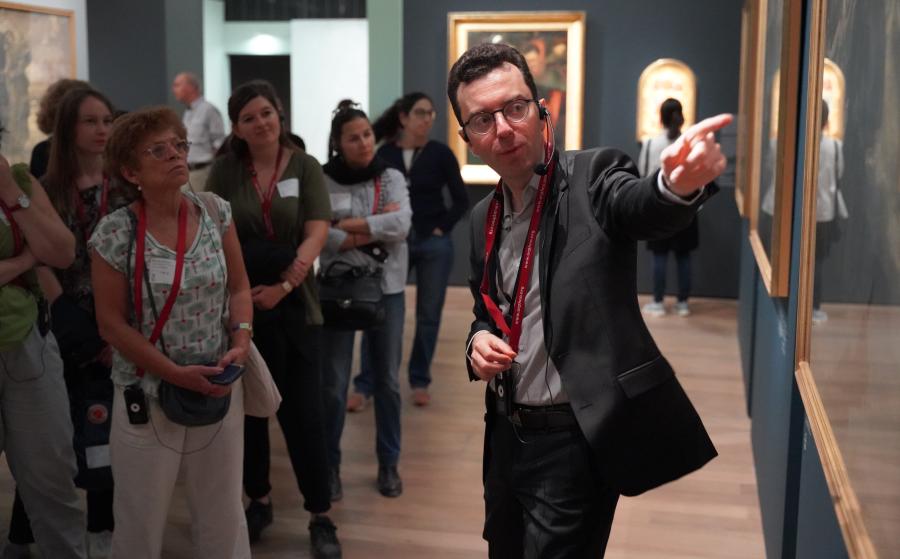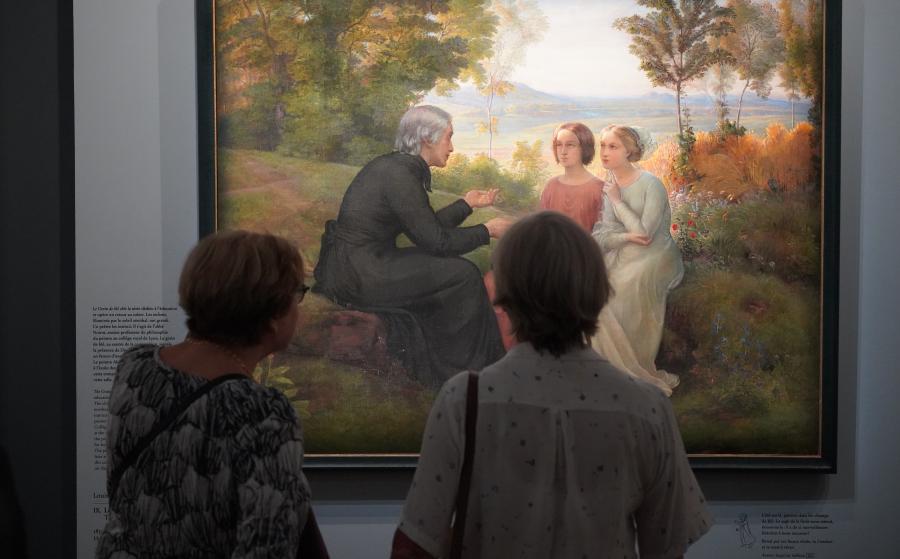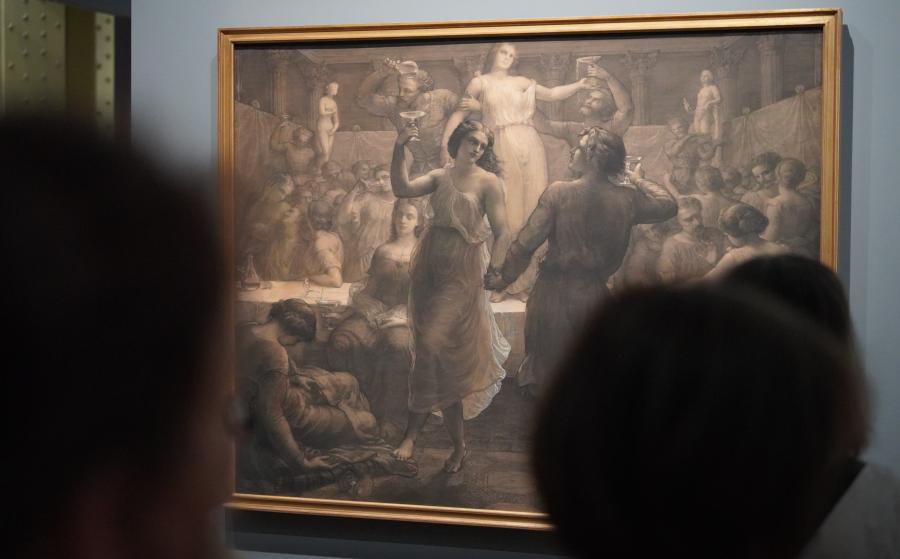Started in Rome in 1835 by the Lyonnais artist Louis Janmot (1814-1892) and continued up until 1881, The Poem of the Soul is a pictorial and literary lifetime project. Conserved in its entirety at Lyon’s Museum of Fine Arts, its 34 compositions illustrate the initiatory journey of a soul on Earth. Formed of two cycles composed respectively of eighteen oil paintings and sixteen charcoal drawings, Henri Focillon described it as “romantic spiritualism’s most remarkable, most coherent and strangest series”.
The first cycle, composed of eighteen oil paintings produced between 1835 and 1854, tells the story of a soul’s first years in Heaven and on Earth, the soul being depicted in the form of a young boy, accompanied by a young girl. We follow the stages and vicissitudes of their journey: birth, childhood, the dangers of a bad education, back on the straight and narrow, dream of the ideal, and then experience of the most terrible reality with the young woman’s untimely death. Théophile Gautier and then Baudelaire were drawn to these canvases when they were exhibited for the first time in 1854 and then admitted to the 1855 Universal Exhibition on Delacroix’s recommendation.
The second cycle, composed of sixteen charcoal drawings on paper mounted on canvas, on which Janmot worked until 1881, tell how the boy, now alone and grown up, is confronted with all the human soul’s temptations and misfortunes: loneliness, doubt, denial of God, and the final the fatal fall. It has a happy ending though, with the advent of divine deliverance and mankind’s redemption. The second cycle was never exhibited in its entirety during the artist’s lifetime, but all the works were reproduced by the photographer Félix Thiollier in 1881, using the carbon print process.
A poem two thousand eight hundred and fourteen verses long, titled The Soul, accompanies the works. Written by Janmot himself and published in two parts, the first in 1854 and the second in 1881, it serves to reinforce the paintings’ “message” and meaning, and is indissociable from them. The Poem of the Soul is neither exactly a simple painted cycle nor an illustrated book; it is a hybrid work, both literary and pictorial, an invitation to contemplate, listen and wander.
The exhibition will acquaint visitors with The Poem of the Soul in its entirety. Although the first cycle forms part of the Lyon Museum of Fine Arts’ permanent itinerary, the second, more fragile due to the nature of the works, is usually kept in the reserves and very rarely shown. Like the Poem of the Soul’s protagonists, the public will be invited to explore the mysteries these images harbor, as they make their way, step by step, on their own “initiatory journey” through the works. The exhibition will encompass both modes of expression – visual and textual. Visitors will be able to hear the poem while contemplating the pictures.
In addition to discovery of the two cycles, the exhibition hopes to provide the keys to their interpretation through a series of thematic cabinets dedicated to the pictorial cycles, the iconography of the soul, the feminine ideal, landscape, nightmares and the unconscious. These developments will place The Poem of the Soul and its creator at the crossroads of references, influences and movements that are as much literary, religious and philosophical as they are artistic. Janmot, painter of the soul, was unlike any other artist of his day, yet his work echoes that of a number of other artists, including William Blake, Philipp Otto Runge and Francisco de Goya before him, his contemporaries the Pre-Raphaelites, and, later, the symbolists, Odilon Redon in particular, who was in contact with him.
Curatorship:
Stéphane Paccoud, Head Curator of 19th-Century Paintings and Sculptures at Lyon Museum of Fine Arts
Servane Dargnies-de Vitry, Curator of Paintings, Musée d’Orsay, Paris


